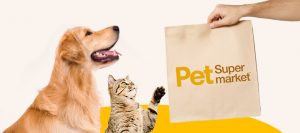Dogs’ paws are constantly in demand. We regularly change shoes while our companions spend their lives wearing the same soles. So what is a pain in the foot? What to do to protect your pet?
How do you know what is hurting your dog?
Start by observing its paw. Most of the time, something happened on the underside. Next, examine the nails: are they average size and whole?
It often happens that a foreign body gets into the dog’s fingers. Do you notice your friend licking a lot, scratching with his teeth, or trying to get something out of his paw? Remove the object with tweezers and take care that the wound does not become infected by soaking its paw in an antiseptic solution.
Also, the pads can be fragile, depending on the time of year and your pet’s activity. It often happens that the dog is injured on a stone or a shard. This part is bleeding a lot. If the wound is large, make a tourniquet to contain the bleeding and go to your vet. He will make a few stitches if necessary.
The right things to do to treat your pet’s injury
If it is an overly long claw that has gotten into a finger or broken, make an appointment with the vet to take care of it. It will probably be necessary to complete the act with an anti-infective treatment. It is essential to check the condition of the non-retractable claws on your furball. If your pet spends a lot of time indoors, its feet may not wear down enough and end up injuring them. When grooming, have its nails trimmed.
For any intervention, or if you have to change your friend’s bandage after veterinary treatment, consider putting a muzzle on him, as he could get scared and bite you involuntarily. Finally, be aware that if your dog goes out little during the winter, his pads can soften so that the slightest roughness represents a danger. Some gels reinforce the leather of the places to prepare your dog for a walk outside when the warm weather returns.
The paws of the dog are an essential asset. Without them, he no longer plays, no longer spends himself, no longer goes to his needs. Help him not to hurt himself and be sure to observe and analyze his behaviour constantly.



